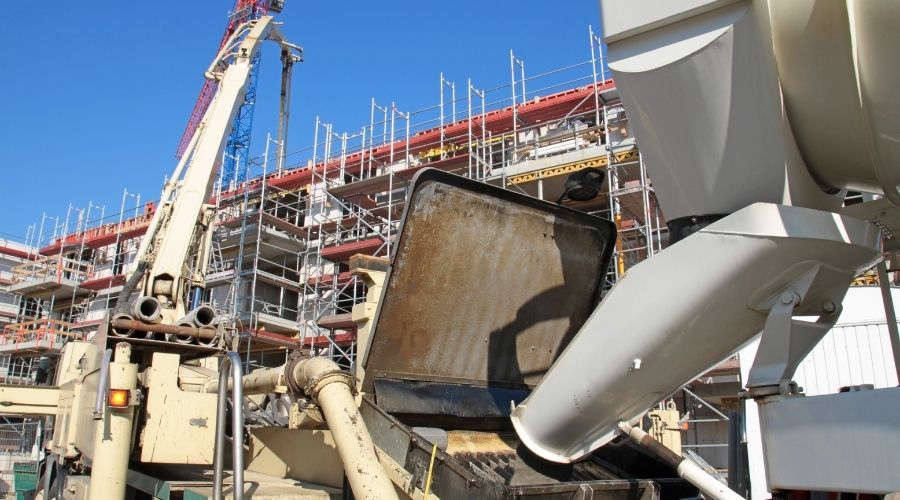
When we’re approached about concrete pumping, we often get asked, “How far can a concrete pump reach?”
And the answer to this question depends on the type of pump and the location of the job.
Let’s take a look at the average reach of a concrete pump and what factors can negatively impact it.
Concrete pump reach depends on the type of pump
Concrete pumps come in all shapes and sizes.
There are small mobile placers with 16m to 20m booms. These booms are supported by mobile pipelines that rely on a secondary concrete pump. There are also huge monster truck-mounted concrete pump configurations that reach as far as 101m!
However, while mid-size concrete pumps are requested most often, “The right tool for the job” is a common saying among concrete pumpers. And this is easily seen by the type of work executed.
Working on a small second story mezzanine at the interior of a building? You’ll likely want to use a 20m or 31m – with low vehicle footprint and an unfolding height of 12 to 18 feet.
Working on a long four-lane bridge with limited access? You’ll probably want to bring out the big guns and use a 55m to 65m concrete pump.
Let’s talk extremes, though.
- What’s the longest pumped? A lined system with no boom was used in a Canadian tunnel to place concrete nearly 6,000-ft away from its source!
- What’s the highest pumped? Look no further than Dubai and Kuala Lumpur for structures towering over 1,000 vertical feet!
Concrete pump reach depends on the location
Are you going inside a building? Can you drive the pump inside? Are you outside on a single lane road, or are you in a narrow causeway in a river? Are there any overhead wires or obstacles?
Questions like these will help you determine which concrete pump is the right tool for the job.
Some placements require going up 60ft and over 80ft, while other placements simply require reaching out as far as possible (i.e. bridge deck).
However, other location factors will come into play, as well. For example, the larger boom pumps require up to 45-foot wide spacing in the front and rear and a length of up to 50 feet (to set up the outriggers).
You’ll also need to keep hopper access in mind. You could have up to a few dozen ready-mix trucks requiring access to the hopper (along with turnaround space) at any given point.
Soil can also play a role in concrete pump selection. Are you working on top of stone, peat, clay, or concrete? These machines use outriggers and place localized surcharges on the ground, and it’s important to understand how different soils can impact the machinery.
What are the benefits of working with a concrete pour pump?
Other than the fact that concrete pumps are downright cool pieces of equipment, they can seriously and dramatically increase production and safety.
Placement volumes with the best crane operators only yield about 45cys/hr (buggies and wheel barrows are even less than that). With the right pump and mix, today’s concrete pumps can place up to over 200cys/hr.
Often, the placement rate is limited by the crew’s ability to finish, and working at a smooth, steady pace between the placement crew and the finish crew is a key factor of success. This being said, the purpose of the concrete pump is not to replace labor – but to increase labor productivity.
On top of this, concrete weighs 145lbs/ft3 and lugging it around for placement can cause occupational injury or heat stroke. Concrete pumps literally and figuratively remove some of the burden a crew carries from one place to another.
Interested in learning more about concrete pumping?
We’d love to help! Fill our online contact form, and we’ll get back to you. Or, feel free to check out our additional resources on concrete technology and innovations.
Related Content:
